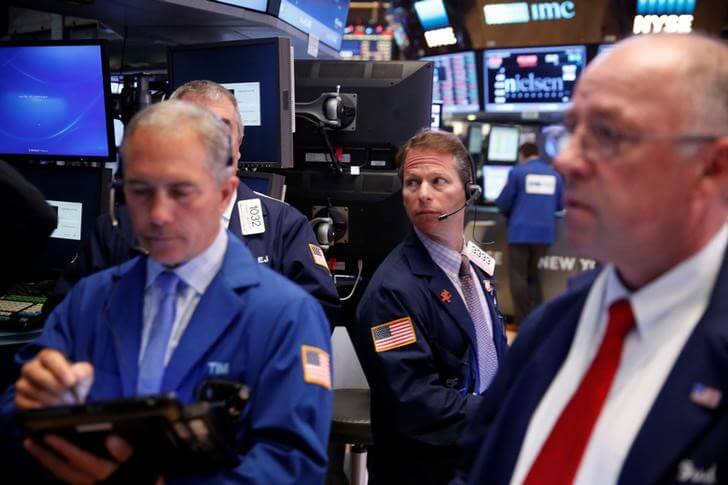By Saqib Iqbal Ahmed
NEW YORK (Reuters) – One year after the U.S. stock market topped out, indexes are again near their highs and that makes options traders nervous, so much so that bullish bets on U.S. equities now are bargain priced, even though the underlying stocks are not. While market volatility is low, general economic weakness and the possibility of Britain’s exit from the European Union could hurt stocks.
That makes an options strategy known as ‘stock replacement’ attractive for investors who worry about the downside but want a piece of the upside.
The strategy involves selling shares or stock index funds and using a part of the proceeds to buy calls. Call options convey the right to buy shares at a fixed price in the future.
For example, on Friday, an investor owning 100 shares of the S&P 500’s tracking exchange traded fund But if the index rallies, the investor would still be able to buy 100 shares at $205 a share and sell them for a profit, even after deducting the cost of the call option.
“Smart investors will use this to their advantage,” said Scott Nations, chief investment officer at NationsShares, a developer of option-based indexes.
Call options for a 5 percent rise in the SPDR S&P 500 fund are selling around the 11th percentile of their five-year range, while the cost of an SPY put betting on a 5 percent drop in the shares is at about its 37th percentile, according to Christopher Jacobson, derivatives strategist at Susquehanna Financial Group. As a market maker in SPY options, Susquehanna trades those options regularly, and Jacobson says he has seen several large trades indicating some investors already are using the strategy.
The benchmark S&P 500 index <.SPX> has surged about 15 percent from February lows, as improving economic data helped investors grow more comfortable with the prospect of a hike in U.S. interest rates. Still, stocks are far from cheap. Even after falling in midday trading on Friday, the S&P 500 index <.SPX> is just 1.7 percent below its all-time closing high and is selling at roughly 16.8 times the expected earnings of its components over the next 12 months, above its 15-year average price earnings ratio of 15. (Editing by Linda Stern and Bernadette Baum)
Don’t know where U.S. stocks are headed? The options market has a deal for you

By Saqib Iqbal Ahmed















